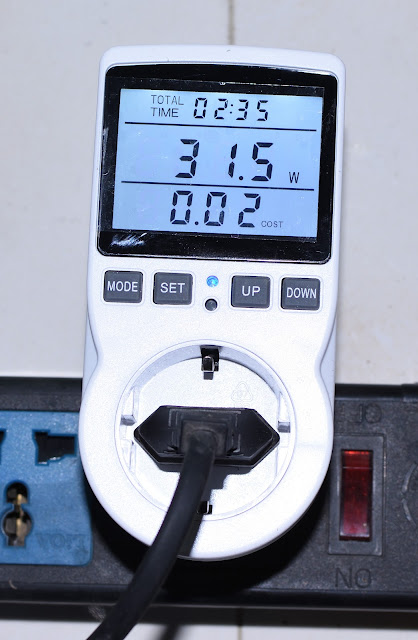If you've replaced your refrigerator in the last few years, you probably got recommendations from sellers and friends/relatives alike to get an inverter fridge to save power. With continuous technological advancement in home appliances, it does sound convincing, but is it actually true? Well, in theory it does, but with typical use of fridge, it's no more than a marketing stunt. Now let me explain in details.
For about 7 years, I was using an old fridge from an unknown brand. I got it for free from a cousin who moved back to her hometown and no longer needed it. It ran fine for a few years until it started sweating daily. After some checking, I found a crack at the top of the freezer compartment, and after some measurement, I found that it consumes about 100 watt per hour, quite a bit for a 150-litre fridge, but did not replace it for various reasons, including the difficulty of carrying a new fridge up 5 stories of the building.A few months ago, the landlord kicked me out. After moving to a new, much nicer place (and quite a bit more expensive), I decided to get a new fridge. Due to home appliance shortage after COVID lockdown, I was only able to get a fridge after 2 months of contacting various vendors. It was an SJ-X196E-SL from Sharp, which was recommended by people I know, and it's also the highest-rated line of fridges in the local market. The fridge has an actual capacity of 180L according to official specs, just a bit more than my old 150L one.
Since traditional fridges were usually rated at 60W, I was expecting it to consume about 50W. After all, it should be power-saving, right? Well, that didn't go well. After measuring using both the main power meter and a dedicated power outlet meter, the typical power consumption is more like 65-70W. Surprised yet? Here are the details:
- Typical room temperature: 28-32°C
- Fridge's global temperature slider set to 50%. Same for the freezer's temperature slider.
- Freezer's temperature: -18°C (yes, I have a few dedicated thermometers)
- Fridge compartment's temperature: 2-5°C
- Idle power consumption: 2W. This is low as expected, however, this state often lasts only 30 to 60 minutes depending on the time of the day.
- Typical power consumption: 50-75W. From what I observed, 50W state lasts the longest, and sometimes it jumps to 75W for a few hours, usually when the defrosting system kicks in.
- Quickly open the door and close it: 60-65W. This state usually lasts for 30 minutes. The more you open, the longer it gets.
- After a power outage: 130W. Yes, freaking 130W, and this may last for hours depending on how long the power outage occurs. This is higher than the constant 100-105W that my old fridge had.
This is the outlet meter I used for testing. Note that the wattage in the picture was from testing a fan, not the fridge itself.
In the end, I did save some power, but this is against an old, cracked fridge, not your typical fridges. This means power-saving is no more than a marketing stunt. However, there was an actual benefit that makes the fridge a good buy: Thanks to having an automatic defrosting system, my foods last much longer with this new fridge, and I haven't seen any ice within the freezer. Veggies mostly stay fresh after a week, whereas with the old fridge they would rot completely after a few days. So while the marketing just ended up as marketing, it does help making my life easier with unmarketed features. If you find your fridge unable to store veggies for a few days, and you keep seeing ice formed in the freezer, it's about time to get a new fridge.


No comments:
Post a Comment